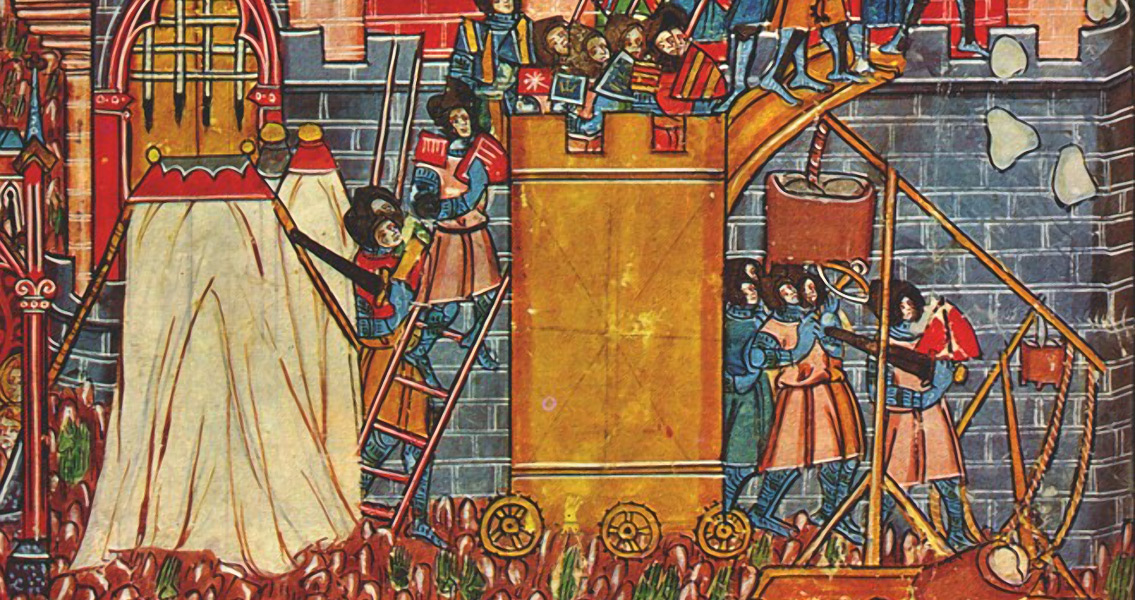<![CDATA[After months of grueling warfare, the Siege of Jerusalem was finally resolved on 15th July 1099. Within hours of the city's defences falling however, the Crusaders embarked on a horrifying massacre of the city's non-Christian inhabitants. The depleted and war weary Crusaders arrived at the Gates of Jerusalem on 7th June, 1099. Of the 4,000 mounted knights and 25,000 infantry that initially set off from Europe, only 1,200 knights and 12,000 foot soldiers remained. Their progress through the Middle East had been costly, battles at Nicaea and Antioch taking a heavy toll. Their progress left a path of destruction, with victories often followed by massacres of the defeated. On the night of the 13th July, the Crusading army at the city's walls finished work on three massive siege towers. Presented with a means to penetrate the city's defences, they launched an attack on Jerusalem, hoping to move the towers close enough to allow troops on to the city walls. The army of Raymond of Toulouse advanced on the city's southern walls. Under bombardment from Jerusalem's defences, the troops nevertheless managed to fill in a moat surrounding the city and push the siege tower up against the wall. Jerusalem's defenders managed to repel the troops on the siege tower however, eventually burning it to the ground. Outside the northern wall, the armies of Godfrey of Bouillon and Robert of Normandy employed similar tactics. Huge battering rams were used to smash holes into the outer wall, the debris then used to fill in the surrounding moats. Under a roof of shields, the men managed to slowly edge their two siege towers towards the city walls, flaming arrows and catapulted rocks raining down on them. Fighting wore on for the whole of the 14th July, as Crusaders on Jerusalem's north and south battled to penetrate the city's defences. Finally, on the morning of 15th July, Godfrey's forces managed to lay their siege tower in position, with some accounts from the time suggesting a sudden change in wind direction had temporarily blinded the defenders with the smoke from the battlefield, affording the Crusaders their window of opportunity. Godfrey's troops fought their way across the walls, and then opened the Saint Stephen Gate, allowing the rest of the Crusaders to surge into the city. What followed was a horrifying display of the brutality of medieval warfare; religious fervour and the frustration of a long, arduous siege exploding in an orgy of blood and destruction. The Crusader soldiers ruthlessly attacked the Muslim and Jewish inhabitants of the city, some accounts claiming tens of thousands were massacred. "The emir who commanded the tower of David surrendered to the Count [of St. Gilles] and opened the gate where pilgrims used to pay tribute. Entering the city, our pilgrims pursued and killed the Saracens up to the temple of Solomon." claimed one eye witness account produced in 1101, by an unknown participant in the battle. "There the Saracens assembled and resisted fiercely all day, so that the whole temple flowed with their blood. At last the pagans were overcome and our men seized many men and women in the temple, killing them or keeping them alive as they saw fit." The Siege of Jerusalem was simultaneously the peak and the nadir of the First Crusade. Launched in 1096 by Pope Urban, the aim of the initial march east had been to secure access to Jerusalem for Christian pilgrims. Victory on the 15th July helped achieve that aim, at least in the short term, but the three years of fighting had been costly. What's more, the brutal massacre on the streets of Jerusalem created hostility in the region against Christians that would see it a battleground for years to come. ]]>
Siege of Jerusalem Turns into a Massacre
